Disclosure: This article contains affiliate links. We may earn a commission from purchases at no extra cost to you, which helps our travel content.
When my manufacturing firm sent me to Auckland for a week-long conference, I immediately spotted an opportunity. Between morning meetings and evening networking events, I discovered that New Zealand's largest city sits atop a volcanic field containing 48 ancient cones—each offering unique perspectives of this stunning harbor city. Having navigated business trips in mountain regions across three continents, I've developed a knack for maximizing limited free time. Auckland presented a fascinating challenge: how to experience its volcanic wonders efficiently while balancing work commitments. What I discovered was a series of accessible urban hikes that transformed my business trip into an unexpected adventure through geological history—one that couples on a budget can easily replicate without sacrificing authentic experiences or breaking the bank.
Understanding Auckland's Volcanic Field
Before lacing up your hiking boots, it's worth understanding what makes Auckland's volcanic landscape so unique. Unlike most volcanic regions I've explored in my travels, Auckland's field isn't centered around one dominant volcano but consists of 48 monogenetic volcanoes—meaning each erupted only once, creating the distinctive cones and craters that now define the city's topography.
The Auckland Volcanic Field has been active for approximately 250,000 years, with the most recent eruption creating Rangitoto Island just 600 years ago—practically yesterday in geological terms. What fascinated me most is how thoroughly integrated these volcanic features are into urban life. Aucklanders have built neighborhoods around them, converted some into parks, and incorporated others into the city's infrastructure.
During my first morning in Auckland, I visited the Auckland War Memorial Museum, which offers an excellent overview of the region's volcanic history. The museum's volcano exhibition provides crucial context for the hikes to follow and includes interactive displays that demonstrate how the city's landscape has evolved through successive eruptions. This background knowledge transformed my subsequent hikes from simple exercise into meaningful geological exploration.
Before setting out, I invested in a detailed topographical map of the Auckland region. While smartphone apps are convenient, I've found that a waterproof hiking map provides reliability when cell service is spotty and offers a better overview of elevation changes between volcanic sites.

💡 Pro Tips
- Visit the Auckland Museum first to understand the volcanic field's formation
- Download the Auckland Volcanic Walks app for self-guided tours
- Early mornings offer the clearest views and fewer crowds on popular cones
Mount Eden (Maungawhau): The Perfect Introduction
For time-pressed travelers or those balancing work commitments like I was, Mount Eden (Maungawhau) offers the perfect introduction to Auckland's volcanic landscape. Just a 15-minute bus ride from the central business district, this 643-foot cone features the city's most intact crater and delivers 360-degree views that orient you to Auckland's geography.
I slipped away from conference proceedings during a long lunch break, catching the frequent 27H bus from downtown. The hike to the summit takes just 20 minutes via a well-maintained path that winds through grassy slopes dotted with sheep—a quintessentially New Zealand experience in the heart of the city.
The reward at the summit is worth every step: a perfect bowl-shaped crater approximately 50 meters deep, which Māori traditions forbid anyone from entering due to its sacred status. Standing on the rim, I gained immediate appreciation for Auckland's unique position straddling two harbors, with the Waitematā to the east and Manukau to the west.
As a production manager accustomed to efficiency, I appreciated how Mount Eden maximizes the experience-to-effort ratio. In under two hours round-trip from downtown, including transportation time, I'd completed a meaningful volcanic hike and gained crucial perspective on the city's layout that would inform my later explorations.
Wear sturdy shoes with good traction, as the path can be slippery after rain. I relied on my hiking shoes which provided excellent grip on the sometimes muddy slopes while remaining comfortable enough to wear back to business meetings afterward.
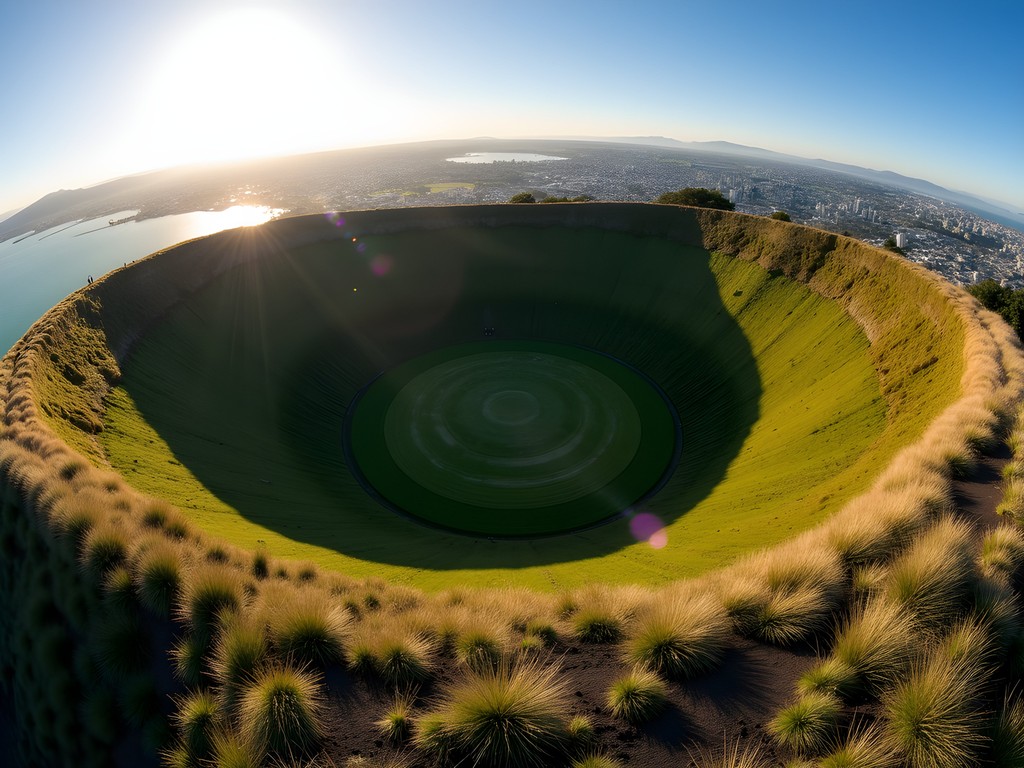
💡 Pro Tips
- Visit at sunrise or sunset for dramatic lighting and fewer tourists
- Take bus route 27H from downtown for direct access
- Walk the full crater rim for different perspectives of the city
One Tree Hill and Cornwall Park: A Half-Day Adventure
When my conference schedule allowed for a half-day exploration, I headed to One Tree Hill (Maungakiekie), Auckland's second-highest volcanic peak and one of its most culturally significant sites. What makes this location particularly appealing for budget travelers is that it sits within Cornwall Park, a sprawling 425-acre public space that combines natural, cultural, and historical elements into one efficient visit.
I reached One Tree Hill via public bus (route 309) for just NZ$3.50 each way. The volcanic cone rises 182 meters above sea level, with a distinctive obelisk marking its summit—a memorial to the Māori people and the final resting place of John Logan Campbell, who gifted this land to the city.
The climb to the summit takes approximately 30 minutes along a paved pathway that spirals gradually upward. While less rugged than other volcanic hikes in the region, the historical significance and sweeping views make it essential. From the top, I could identify at least six other volcanic cones across the city, creating a connect-the-dots effect that revealed Auckland's geological foundation.
What truly sets One Tree Hill apart is the surrounding Cornwall Park, where free-roaming sheep graze beneath mature trees, creating postcard-perfect scenes that belie the urban setting. After descending, I followed the 5km loop trail that circles the park's perimeter, passing historic stone buildings, a working farm, and ancient Māori terracing systems that tell the story of pre-European settlement.
The park offers several picnic areas with free-to-use barbecue facilities. I packed a simple lunch in my insulated lunch bag, which kept my food fresh throughout the morning hike and saved considerable money compared to dining out. For couples on a budget, this makes for a romantic and economical afternoon—pick up supplies from a local supermarket and enjoy a picnic with volcanic views.
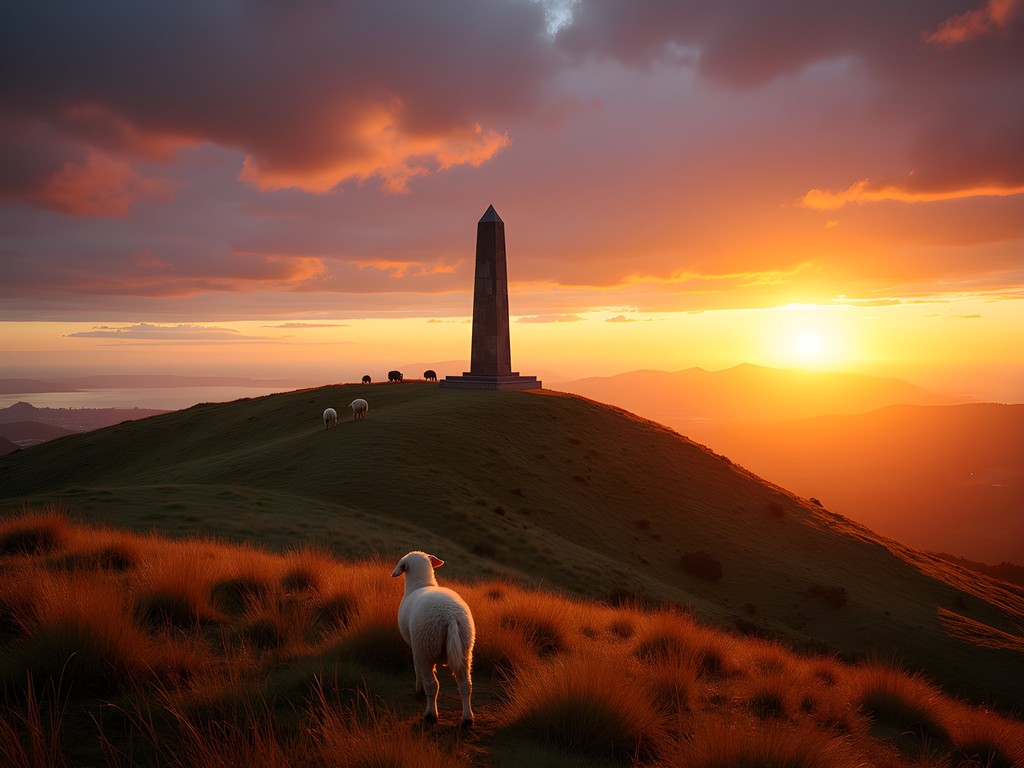
💡 Pro Tips
- Combine your visit with the Saturday farmers market at Cornwall Park for fresh local produce
- Download the free Cornwall Park app for self-guided walking tours
- Visit Acacia Cottage (Auckland's oldest surviving wooden building) within the park grounds
Rangitoto Island: Auckland's Youngest Volcano
No volcanic exploration of Auckland would be complete without visiting Rangitoto, the symmetrical island cone that dominates the harbor. At just 600 years old, it's the youngest and largest volcano in the Auckland field, and offers perhaps the most comprehensive volcanic experience in the region.
I blocked out a full day between business commitments for this excursion. Fullers Ferry operates regular services from downtown Auckland to Rangitoto, with return tickets costing NZ$39—one of the few unavoidable expenses in this otherwise budget-friendly itinerary. The ferry ride itself provides spectacular views of Auckland's skyline receding behind you as Rangitoto grows larger on the horizon.
Unlike the grassy slopes of the mainland cones, Rangitoto presents a stark landscape of black scoria rock and pioneer pohutukawa forest—the largest pohutukawa forest in New Zealand. The main summit track is a well-maintained 2-hour return journey that takes you through lava fields and emerging forest to the perfectly formed crater rim.
What made Rangitoto particularly fascinating was exploring the lava caves along the summit route. These tunnels formed when the exterior of lava flows cooled and hardened while the interior remained molten and eventually drained away. Bring a reliable headlamp if you plan to explore these caves—I found mine essential for navigating the darker recesses while keeping hands free for scrambling over uneven surfaces.
As a production manager accustomed to manufacturing processes, I was struck by the parallels between industrial flows and these natural lava formations—both following the path of least resistance to create efficient systems. The island has no food or water facilities, so pack everything you'll need for the day. I filled my reusable water bottles before departing and carried enough snacks to fuel the hike.
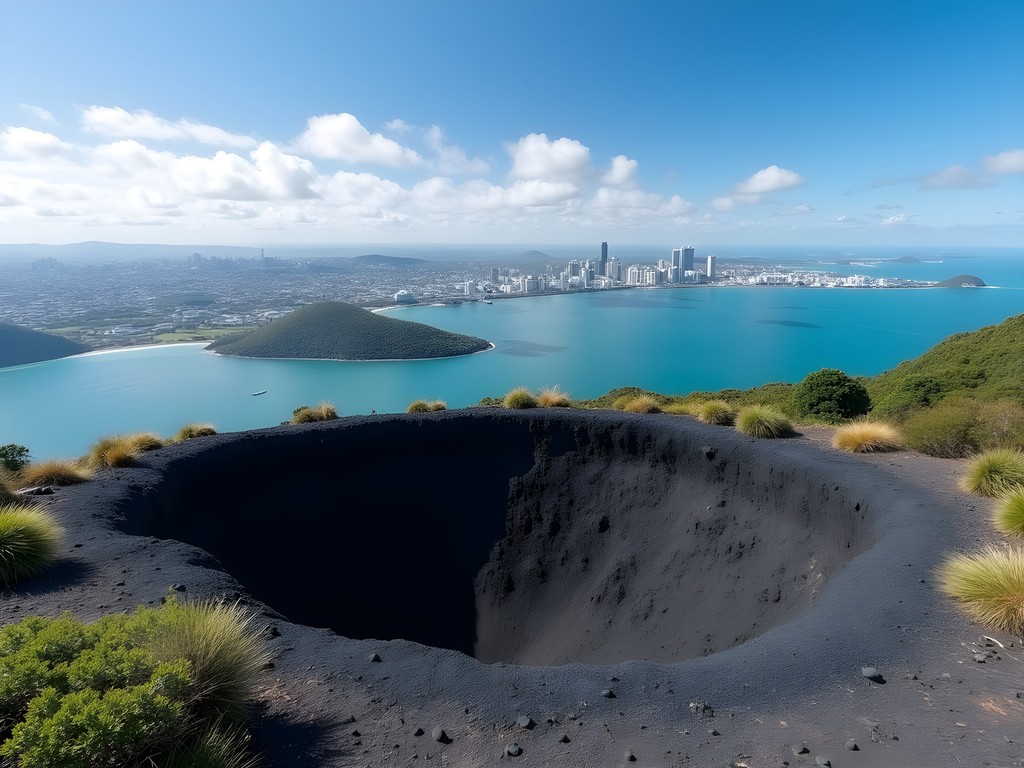
💡 Pro Tips
- Book the first morning ferry to maximize your time on the island
- Take the detour to visit the lava caves—they're worth the extra time
- Pack at least 2 liters of water per person as there are no services on the island
North Shore Volcanoes: Off the Tourist Track
While most visitors focus on the central Auckland volcanoes, I discovered some of the most rewarding experiences across the harbor on Auckland's North Shore. When my business meetings concluded early one afternoon, I hopped on the frequent Northern Express bus and headed to Lake Pupuke and North Head—two volcanic features that offer distinctly different experiences from the cone-shaped mounts of central Auckland.
Lake Pupuke in Takapuna is Auckland's only freshwater lake, formed in the crater of a volcano that erupted 150,000 years ago. What makes this site unique is that it's a maar volcano—formed by explosive interaction between magma and groundwater—rather than the scoria cones found elsewhere in Auckland.
I circumnavigated the 4.5km lake perimeter in about an hour, enjoying the peaceful residential setting and stopping at Takapuna Beach for coffee. The juxtaposition of this tranquil blue crater lake against the nearby ocean creates a striking visual reminder of Auckland's complex volcanic history.
Just a short bus ride away, North Head (Maungauika) in Devonport offers yet another volcanic experience—this time with added military history. This small volcanic cone has been modified extensively for coastal defense purposes, with a network of tunnels and gun emplacements dating back to the late 19th century.
The 30-minute climb provides some of the most spectacular views of downtown Auckland and Rangitoto Island. I timed my visit for sunset and was rewarded with golden light illuminating the city skyline across the harbor—a perfect end to my volcanic explorations.
For couples on a budget, the North Shore excursion offers excellent value: the bus fare is minimal, the walks are free, and the Devonport area has several affordable dining options. I particularly enjoyed picking up fish and chips from the local shop and eating them on the beach while watching the city lights come on across the harbor—a simple pleasure that cost less than NZ$15 but created lasting memories.
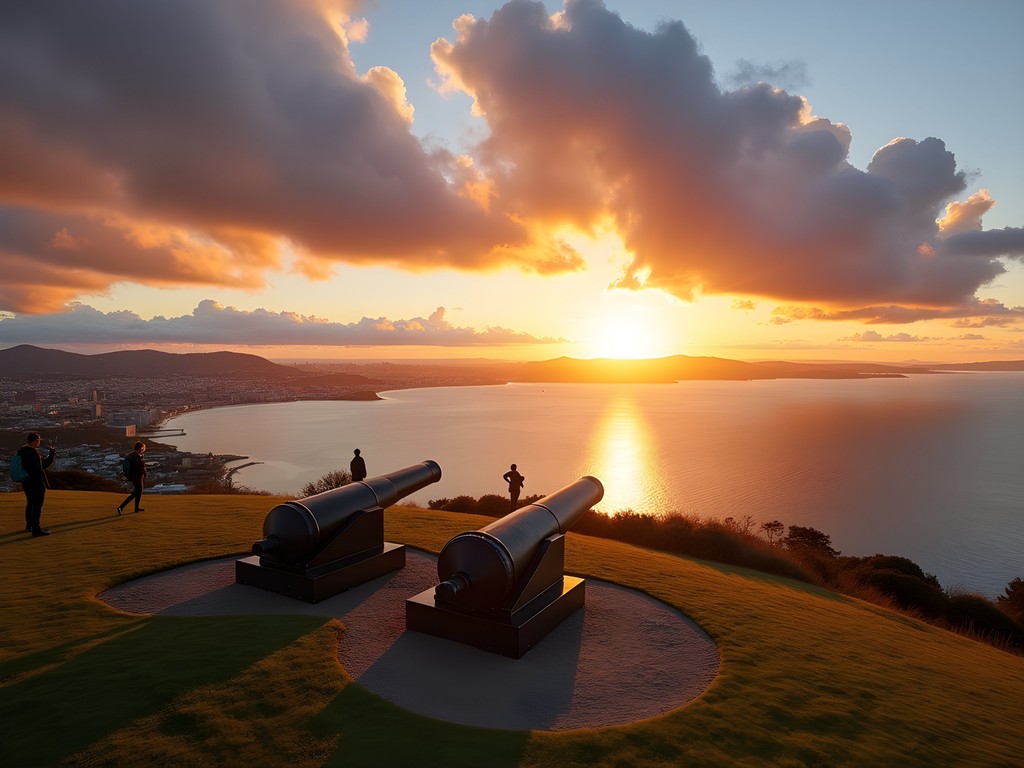
💡 Pro Tips
- Use the AT HOP card for discounted public transport to North Shore locations
- Combine Lake Pupuke with a swim at Takapuna Beach in summer months
- Visit North Head at sunset for the best photography opportunities
Creating Your Own Volcanic Circuit: Practical Planning
After a week of balancing work commitments with volcanic explorations, I developed an efficient approach that couples on a budget can easily adapt. The key is strategic planning around Auckland's excellent public transportation system, which connects most volcanic sites for just a few dollars per journey.
Start by purchasing an AT HOP card (NZ$10) from any transport hub or convenience store. This reloadable card reduces bus and train fares by approximately 25% and eliminates the need for exact change. For a couple spending a week exploring Auckland's volcanoes, this investment typically pays for itself within 2-3 days.
I found the most efficient circuit begins with the central cones (Mount Eden and One Tree Hill) to gain geographical context, followed by Rangitoto Island for contrast, and concluding with the North Shore volcanoes. This progression builds your understanding of the volcanic field while minimizing transit time between locations.
For tracking my routes and recording geological observations, I relied on my waterproof notebook which proved invaluable during unexpected rain showers. The dot-grid pages allowed me to sketch cross-sections of the various volcanic features while keeping notes on their distinctive characteristics.
Accommodation represents the largest expense for most travelers, but Auckland offers several budget-friendly options near volcanic sites. I stayed at a business hotel downtown, but couples might consider the YHA Auckland International hostel, which offers private rooms from NZ$90 per night and sits at the base of Mount Eden—perfect for early morning summit hikes before the crowds arrive.
Food costs can be managed by combining picnic lunches at the volcanic parks with selective dining out. Most major supermarkets (Countdown, New World) offer prepared food sections where you can assemble affordable meals. The Auckland Night Markets (rotating through different suburbs each evening) provide excellent street food options from NZ$5-15 per dish—I particularly enjoyed the Thursday night market in Henderson after hiking nearby Te Atatū Peninsula.

💡 Pro Tips
- Purchase an AT HOP card for public transport discounts throughout your stay
- Consider accommodation near Mount Eden for central access to multiple volcanic sites
- Use the Auckland Council's free GeoMaps tool to identify lesser-known volcanic features
Final Thoughts
Auckland's volcanic landscape offers a rare opportunity to experience dramatic geological features within an urban context—all accessible via public transportation and mostly free to explore. As someone who's hiked mountain regions across three continents, I found these volcanic cones uniquely rewarding precisely because they're integrated into city life rather than isolated in wilderness. They tell a story of how human settlement adapts to and coexists with powerful natural forces. For couples seeking adventure on a budget, Auckland's 48 volcanoes provide an ideal framework for exploration—each cone offering a different perspective on both the geological and cultural landscape. Whether you're extending a business trip like I did or planning a dedicated vacation, make time to connect these volcanic dots across Auckland's skyline. You'll gain not just spectacular views but a deeper understanding of how this city rose from fire and continues to evolve in the shadow of sleeping giants.
✨ Key Takeaways
- Auckland's volcanic field offers accessible hiking opportunities directly from the city center
- Public transportation connects most major volcanic sites, making car rental unnecessary
- Combining volcanic hikes with public parks and beaches creates budget-friendly day itineraries
- The geological diversity among Auckland's volcanoes provides varied experiences despite their proximity
📋 Practical Information
Best Time to Visit
November through April (Southern Hemisphere summer and shoulder seasons)
Budget Estimate
NZ$100-150 per day for a couple (excluding flights)
Recommended Duration
3-7 days
Difficulty Level
Moderate (Most Hikes Require Reasonable Fitness But No Technical Skills)

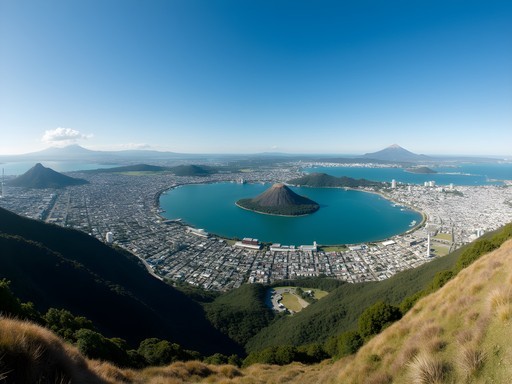








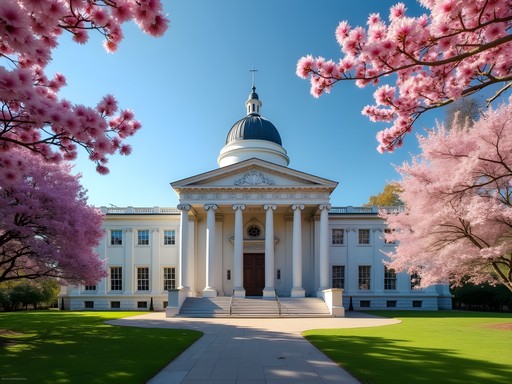
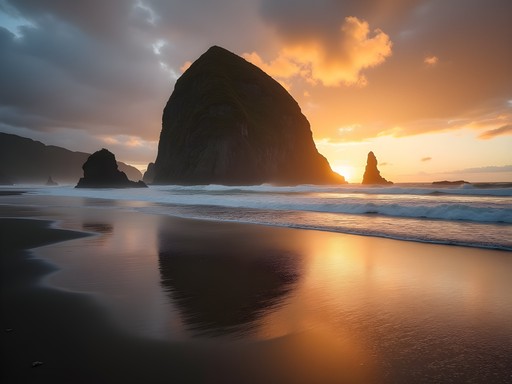
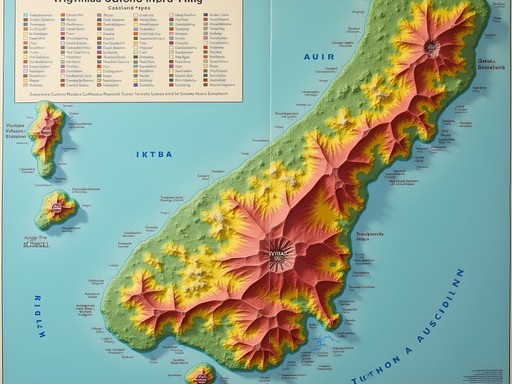



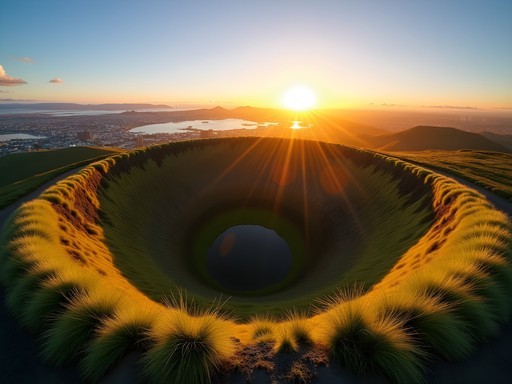
Comments
moonway
Is it easy to get to these spots using public transportation? Or should I rent a car?
wanderlustguide
Public transport works great for most of them! The inner city ones like Mt Eden have regular buses. For Rangitoto you'll need the ferry from downtown. Only the outer ones might need a car.
moonway
Perfect, thanks! Will save on car rental then.
exploreone
Love this! Never knew Auckland had so many volcanoes!
Sophia Gomez
As someone who also visits Auckland for business regularly, I appreciate how you've highlighted activities that fit between work commitments! I've found that a quick morning hike up One Tree Hill before meetings is the perfect way to clear my head. The business district is only a 15-minute Uber ride away, so it's totally doable even with a packed schedule. I always pack my hiking shoes which are lightweight enough to toss in my business luggage but sturdy enough for these volcanic trails. The Auckland Museum near the Domain is also great for a quick cultural visit if you have a couple hours free.
wanderlustguide
I did Mount Eden at sunset last year and it was magical! The city lights coming on while standing on top of a volcano was such a unique experience. If you're short on time in Auckland, this is definitely the volcanic cone to prioritize. The Māori terracing is really well preserved too.
Casey Andersson
As a Wellingtonian who visits Auckland frequently, I can confirm Rangitoto is absolutely worth the ferry trip! Pro tip: If you're staying at one of the harbor hotels, book the earliest ferry possible (around 7:30am). You'll beat both the crowds and the midday heat, plus the morning light makes for incredible photos of that iconic symmetrical cone. I did this last month and practically had the summit to myself for a good 20 minutes. The lava caves are also less crowded early in the day. Just remember to bring plenty of water as there are no shops on the island!
moonway
Thanks for the early ferry tip! Do you need to book in advance?
Casey Andersson
Definitely book ahead in summer (Dec-Feb), but shoulder season you can usually get tickets the day before. The Fullers website makes it easy!
summervibes
OMG the photos of Rangitoto Island are STUNNING! Definitely adding this to my bucket list!
sunnyadventurer
Great post! Are these trails accessible year-round? Planning a trip in early winter (June) and wondering if that's still a good time to see the volcanoes.
Abigail Matthews
Yes! Auckland's volcanic trails are definitely accessible year-round. June is actually quite nice - fewer tourists and the temperatures are mild (around 12-15°C). Just bring a light raincoat as winter tends to be the rainy season.
sunnyadventurer
Perfect, thanks for the quick response! Adding these to my itinerary now.
Gregory Boyd
Having hiked volcanic cones across the Pacific Rim, Auckland's field is uniquely accessible. What fascinates me is the variety of eruption types visible within such a compact urban area. The scoria cones like Mt. Eden formed differently than the shield volcano of Rangitoto. For geology enthusiasts, I recommend bringing a field guide to identify the different lava formations. The black sand at some of Auckland's western beaches also comes from volcanic material - worth checking out if you have an extra day. Takapuna Beach on the North Shore has excellent examples of fossilized kauri trees engulfed by ancient lava flows about 40,000 years ago.
mountainblogger
Didn't know about the fossilized trees at Takapuna! Adding that to my list for next time.
summerguide
If you're going to One Tree Hill, try to time it for sunset! The light hitting the obelisk is gorgeous.
luckyninja
Thanks for the public transport tips! Saved me so much planning time!
Venture X
Premium card with 2X miles, $300 travel credit, Priority Pass